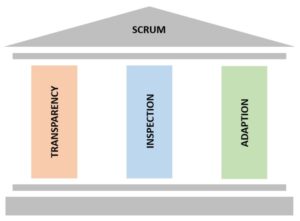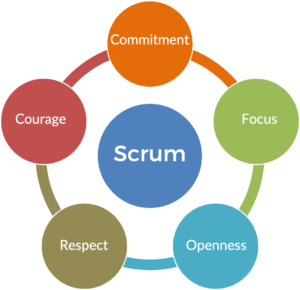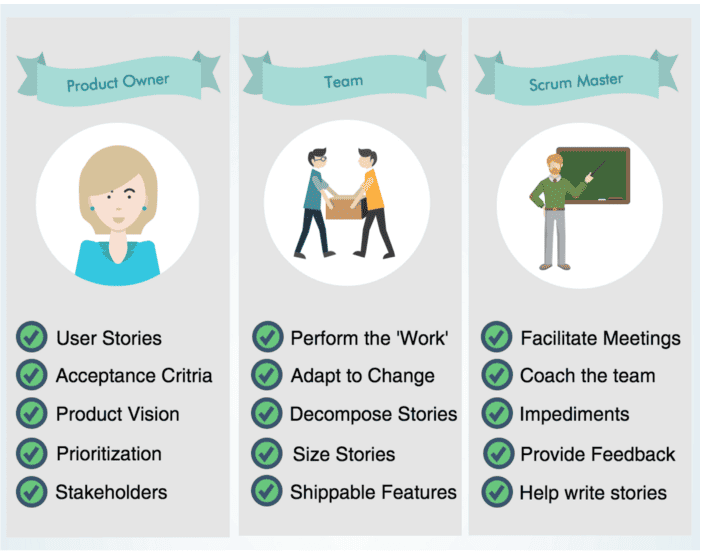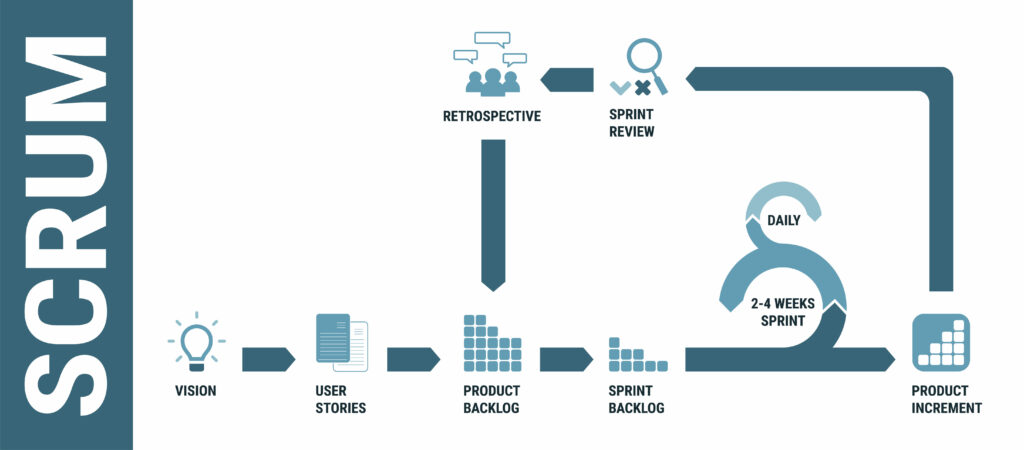What is Scrum Development?
As the world experiences closer and more disruptive revolutions in core technologies, it’s only natural for us to experience big changes in how we work. Scrum Development is one of those processes that turned usual software development methods on their head, ushering in a new era of adaptive and efficient programming. Today, Scrum is one of the most common ways that teams work. According to this Digital.ai report, it is currently the most popular Agile method, used in some form by 81% of the global development community. And with new derivatives of Scrum finding acceptance amongst users, the productivity framework has only grown in popularity.
In this extensive guide to Scrum development, we’re taking a deep dive into Scrum, including the meaning and history of the method and the principles/practices on which it functions.
What is Scrum development?
Scrum is a software development framework that helps engineering teams get work done. It is essentially a set of practices, roles, events, artifacts, and rules to help teams do efficient and high-quality work.
Scrum has a simple premise: teams don’t have to know it all before they start coding, developing software, and shipping features that solve users’ problems. Instead, they can begin with the information they have and apply their creative energies to the project in a time-boxed structure that lets them continuously adapt and improve the solution with new information.
Compared to the traditional “waterfall” model that guided engineering teams’ work, Scrum helps teams work faster and more efficiently. For example, under the waterfall model, software development would progress from exhaustively gathering requirements to designing, coding, testing, and shipping the product and then waiting for feedback.
However, there were several problems with this approach. First, it was inflexible to sudden changes in customer requirements (which happen all the time) and it did not fully involve the customer. As a result, it was likely that teams would waste time building features the customer may not want. Also, there was a greater likelihood of bugs and silos since those who design the project do not necessarily code, and those who code may not be the ones testing.
Conversely, Scrum emphasizes teamwork, fast learning, self-organizing, and rapid iterative progress towards a goal. It uses cross-functional teams that actively work on the project during short, intense periods called sprints. Rather than have teams try to ship entire projects at a go, Scrum breaks the project down into releases that actively incorporate customer interaction and feedback. So, at the end of each sprint, the team has a fully functional system that can be shipped.
Relationship between Scrum and Agile
It is common to see Scrum referred to as an Agile development methodology. Also, because they both emphasize continuous improvement led by teamwork, some might think the two concepts are the same. However, there is a difference between the two.
Agile is a broad development philosophy or mindset that guides how entire organizations function. On the other hand, Scrum is one of the methods that teams use to practice Agile Software Development. Since practicing Agile can often mean changing how entire teams think about and carry out their work, it can often be challenging to implement. Scrum provides a structure in which organizations and their people can learn to adopt an Agile mindset.
Scrum is a heuristic framework that helps teams self-organize and continuously improve to confront unpredictability and solve complex problems. It uses many principles and values that draw from the Agile mindset, which is why it is a method that can get your people accustomed to Agile.
History of Scrum Development
Hirotaka Takeuchi and Ikujiro Nonaka laid the foundation for the Scrum framework in their 1986 Harvard Business Review article titled, “The New Product Development Game.” In the article, the authors described a new approach to managing product development – a rugby-like approach where teams participate as one, working together and passing the project back and forth as needed. They pointed out that the rugby approach holds the key to competing in a modern business world, unlike the outdated relay-race system, where teams work in a straight line and pass the baton along.
Building on the concepts in this article, Jeff Sutherland and others at the Easel Corporation created the Scrum software development process in 1993. They combined Takeuchi and Nonaka’s position with ideas relating to productivity improvement, object-oriented development, iterative and incremental processes, and empirical process control. Then, in 1995, they presented a paper titled “Scrum Development Process,” which formally laid down the Scrum method, and the rest, as they say, is history.
Scrum theory and its three pillars
As mentioned above, Scrum is a framework. It is founded on empiricism, which holds that knowledge comes from experience. As a result, Scrum theory supports an evidence-based learning and decision-making system where teams continuously improve by taking small steps and reflecting on their past wins and losses.
This iterative approach helps reduce unpredictability and increases the chance of project success. For the empirical process to work, Scrum relies on three principal pillars that hold the framework up:
- Transparency: Effective collaboration is critical to success in Scrum, and collective ownership and a shared vision of the project help make this possible. Teams bring different practice areas and functions to the sprint, but everyone proceeds with a common understanding of the project. This helps them toil towards the same goal with shared visibility about the
 project’s status and issues.
project’s status and issues. - Inspection: Empiricism depends on constant reflection and evaluation. Therefore, as part of Scrum’s incremental approach, team members are encouraged to frequently assess not only their own work, but the work of other team members as well. They can quickly catch bugs, errors, or any unsanctioned deviations from the project requirements when working in this manner. Additionally, at the end of each sprint, the entire team reflects on what went wrong, what went right, and how to improve throughout the next sprint.
- Adaptation: Flexibility is one of Scrum’s most desirable qualities, embodied in this pillar. The team is encouraged to course-correct as often as needed when new information, circumstances, or requirements from the customer demand. This adaptive approach lets them constantly revise their strategy to tackle new problems as they arise. Likewise, an openness to change fosters continuous improvement as teams continually take advantage of opportunities to make their releases better.
In addition to the three pillars of Scrum, five core values underline the method and support these pillars. They are:
- Commitment: Everyone in the team is invested in its work, and each team member supports others to achieve the shared goal.
- Courage: No one hides or sits back in the team. Everyone participates effectively and as equals in an environment that actively encourages input from all team members.
- Focus: Distractions and deviations from the goal are reduced to a minimum or eliminated. For this reason, Scrum incorporates short, time-boxed events to keep everyone on track and pointed at the same target.
- Openness: Honesty and communication are vital to objective reflection and improvement. Team members are not afraid to share what they believe has succeeded and what needs improvement.
- Respect: Scrum teams are cross-functional, meaning everyone brings different skills and strengths on board which are respected by all. The team works together, succeeds, and fails together – no individual takes the blame when things go wrong or the credit when success occurs.
Scrum Development roles
Scrum teams are self-organizing – they are internally governed and consist of every professional needed to achieve their common goal efficiently. The team doesn’t include just developers or programmers. Depending on the specific requirements of the project, there will also be designers, UI/UX specialists, operations engineers, and testers.
The team also includes a member who stand in the customer’s place and one who directs the Scrum process itself. These are called the Product Owner and Scrum Master, respectively. In addition to the Development Team, they make up the defined roles of a Scrum team.
Scrum teams are typically small, with usually no more than seven to nine members. A good rule of thumb is to use former Amazon CEO Jeff Bezos’ “two pizza rule.” The team should be small enough to share two pizzas comfortably. Anything larger and you might have too many hands in the pot, which will affect the team’s speed and efficiency. Below is a description of each of the Scrum roles.
The Sprint Cycle
The Sprint Cycle is the repetitive process that developers use to complete a development project. They typically last between one and four weeks and a project can take as many as ten sprint cycles from beginning to end. Most Sprints break down into the following components:
- Planning: User stories are reviewed to determine what will be delivered during the Sprint.
- Backlog: This is the finalized list, agreed to by the team that defines what will be completed during the Sprint.
- The Sprint: The part of the cycle where development work is completed. An ideal sprint lasts two weeks.
- Daily Scrum: A daily status meeting, led by the Scrum Master.
- Outcome: The usable project developed during the Sprint. Typically, the project owner determines if the product is ready or if it needs additional development.
- Sprint End: At the conclusion of the Sprint, the team meets for a Sprint Review to present the completed work to the product owner. They also have a Sprint Retrospective to discuss what process improvements are needed for future Sprints.
Let i3solutions help you realize the benefits of Scrum Development
Organizations that adopt a Scrum Development Methodology have better visibility into their projects, increased ability to manage changing priorities and deliver higher quality products. For over 25 years, i3solutions has gained extensive experience in Scrum Development and has mastered the ability to quickly release usable products to our customers. Contact us today for help managing your Scrum Development process.
Leave a Comment





